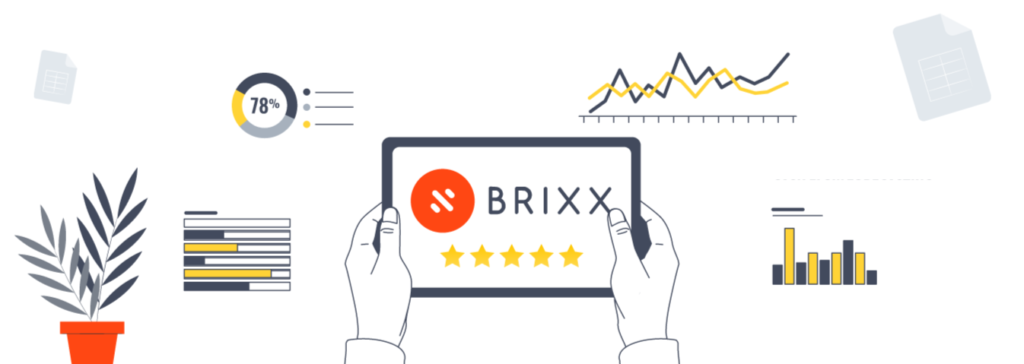

Finding the right audience for your business is like finding treasure. But how do you do that? It’s through little something called ‘market research.’
This article will show you how to use market research to discover your target audience. Ready to unlock the secrets to reaching the right customers for your business? Let’s read on!
What is market research?
When starting a business or launching a new product, you’ll want to carry out something called ‘market research’. Imagine it as an important detective mission for your business. You will need the information acquired through market research to understand more about your own offering. For example, you need to know your customers in order to understand just what they are looking for, and how much they are likely willing to pay for your products. Ensuring deep understanding of your customers, products in the market, and trends is as important as any other aspect of your business. Without these, how will you ever know if you are connecting with the right consumer?

How to identify your target audience
In order to pinpoint your target audience, start by considering who would genuinely be interested in purchasing your product or service. It might feel like a bit of a puzzle – you need to identify your target market to understand who they are, but how do you begin?
Begin by examining the research you’ve gathered on your competitors. Their customer base will give valuable insight into your own. By assessing how they have been marketing to their customers, you can gain clarity on your own target market.
Ask yourself: What are the characteristics of their customers? Whom are they trying to reach with their marketing efforts? What demographics or groups do they belong to? Once you start recognizing common traits among potential customers, you’ll be better equipped to tailor your approach to connect with them effectively. Here are some suggestions:
- Research your market upon completing your product/service
- Imagine your ideal customer and create a persona to help understand them
- Consider demographics and information such as age, gender, income, etc.
- Review any potential existing customers and learn more about them
- Use surveys and questionnaires to learn more about your customers and their feedback
- Analyze with your audience on social media to see who is engaging with you
- Keep testing and refining your understanding of your target audience as your business grows
Understanding more about your target audience
Let us have a look in a little more detail at some of the ways you can identify your own audience:
1. Identify your audience through interviews
Interviewing people might seem like a time consuming task. However, as you are getting to the face of someone in your audience, it can yield the most valuable insights.
To ensure your interviews provide positive gains, follow some of our suggested steps:
- Make sure to target the right audience members, focusing on groups that are likely to engage with your business
- Ensure you achieve a decent sample size, such as 150 individuals from your target demographic
- Use social media platforms, forums, or conduct simple surveys near competitors to reach your target audience
- Avoid yes or no answers with direct questions related to any business objectives
- Make sure that you secure participants’ privacy following collecting information
You will need to recognise that your customer base may comprise require insights from multiple customer groups. This might seem like it requires more focus and additional effort, but it provides an enhanced understanding and allows you to tailor your marketing strategies for each group.
It is worth noting that different customer groups display distinct purchasing behaviors with differing motivations. By analyzing their habits, you can refine your marketing efforts to resonate with each target market effectively.

2. Using customer personas to understand your market
Customer personas serve as detailed profiles representing different groups of individuals who may be interested in purchasing your product/service. These personas help you to ensure that your offering resonates with the intended audience and effectively addresses their specific needs. Although fictional, these personas are based on real data taken from actual individuals.
In this instance, you need to understand fundamental details such as name, age, and occupation. Then, use your creativity to expand their personas to encompass factors like purchasing patterns, preferences, and more.
For instance, consider a coffee-selling business targeting various customer segments:
- Alice, the commuter: A developer commuting daily to and from London.
- Bob, the student: A student with ample free time, often arriving in town early.
- Claire, the full-time parent: A mother engaging with other parents in the local park regularly.
- Danielle, the office worker: An employee at a small recruitment agency within a bustling office park.
- Evan, the retiree: A retired hairdresser frequently seen around town.
By personifying these customer segments, you gain insight into their purchasing behaviour, preferences in the market, and receptiveness to advertising and marketing efforts.

3. Putting your research to work
Don’t be afraid to embrace flexibility and adaptability in your approach based on the findings of your market research. The purpose of collecting this data is to empower you to make informed decisions about your business.
Through a combination of audience identification and competitor analysis, you’ll gain valuable insights into your target audience. You will learn about their preferences, dislikes, and, most importantly, their needs enables you to shape your business strategies accordingly. This data can help to lay the foundation for both short-term tactics and long-term financial planning.
If you feel uncertain about using this data for decision-making, consider investing in additional or higher-quality research to bolster your confidence.

How your target market affects your financial forecast
Having conducted research on both your competitors and potential customers, you can now refine your pricing strategies. Pricing is the key influencer to the appeal of your product or service within your target market. Should you set it too high, you will deter potential buyers. Set it too low, and you will undervalue your offering. Achieving the right balance is challenging but crucial for success, and your pricing strategies will evolve over time with continued data collection.

Refine your pricing strategy in Brixx
Get started with our forecasting software so that you can plan your business' future
You will need to leverage your customer personas to guide your decisions. Consider questions like, “would Claire, the 26-year-old parent with two kids, purchase this product?” and “how does this address Claire’s specific needs?“.
Your competitors also cater to specific target markets successfully. To compete effectively, you must avoid pricing yourself out of the market while maintaining profitability.
At this point in time, it’s essential to also understand your break-even point – the sales required to cover your costs at different price points. Begin by estimating your monthly operational expenses to gain a preliminary understanding of your financial landscape. You can do this in a financial forecasting tool like Brixx.
For instance:
If your monthly costs equate to £8k and you plan to sell a product priced at £25, you’ll need to sell a minimum of 320 units to break even (8000/25=320).
Map out your financial plan using varying price points:
- Low pricing, such as £20
- Mid-range or ideal pricing, such as £30
- High pricing, such as £60
Determine these price points based on the insights from your customer research, reflecting what individuals are willing to pay for your offering. Each situation will require different sales volumes to achieve break even. Having these figures in mind aids in strategic planning for your business operations and marketing initiatives.
Continuously test different scenarios to gather more data, enhancing your preparedness for market entry and ensuring informed decision-making throughout your business journey.
Make sure to sign up for Brixx in order to complete your financial forecast.












